How DLSS 4 & Ray Tracing Impact High-End GPU Performance

The evolution of GPU performance is accelerating faster than ever, driven by the combined power of DLSS 4 and Ray Tracing. Together, they are transforming how games render light, shadow, and motion, pushing the boundaries of realism while maintaining exceptional frame rates.
In this in-depth technical overview, we explore how DLSS 4 ray reconstruction and AI-enhanced Ray Tracing GPUs are reshaping both desktop and laptop performance, what makes them distinct from DLSS 3.5, and why technologies like Nvidia RTX 5080 and RTX 5090 are redefining the meaning of “high-end”.
Current GPU Performance Landscape
Today’s high-end GPUs particularly those built on NVIDIA’s Blackwell architecture are far more than rasterisation engines. They are hybrid compute systems, balancing shader processing, tensor-based inference, and dedicated ray-tracing operations across thousands of cores.
This complexity introduces a familiar problem: the better visuals become, the heavier the workload on the GPU. Real-time lighting, reflections and shadows offer unprecedented realism, but even the most powerful silicon feels the strain when full Ray Tracing is enabled.
DLSS 4 addresses that imbalance by using AI to reconstruct frames and upscale resolution, effectively delivering native-quality visuals without the same rendering cost. It’s the technological bridge between high fidelity and high frame rates that defines modern DLSS 4 and Ray Tracing GPU performance.
Ray Tracing Fundamentals: Light Simulation and Computational Load

Ray Tracing simulates the physical behaviour of light via casting rays, calculating intersections, and reproducing natural illumination with precise accuracy.
Each ray interacts with surfaces to generate shadows, reflections, and global illumination. The more complex the scene, the higher the computational demand. Even with dedicated RT Cores, Ray Tracing can still reduce frame rates by 15 to 40% depending on the title and scene complexity. This measurable Ray Tracing impact on frame rates is why AI-based rendering support matters.
In fully path-traced environments such as Cyberpunk 2077: Overdrive Mode, the demand can double again. This makes Ray Tracing both a marvel and a challenge for GPU designers and end users.
Without intelligent frame reconstruction, achieving consistent frame rates with Ray Tracing enabled has traditionally required top-tier hardware and aggressive cooling solutions often only found in the best GPUs for Ray Tracing and DLSS.
DLSS 4 Architecture: Transformer-Based AI Rendering
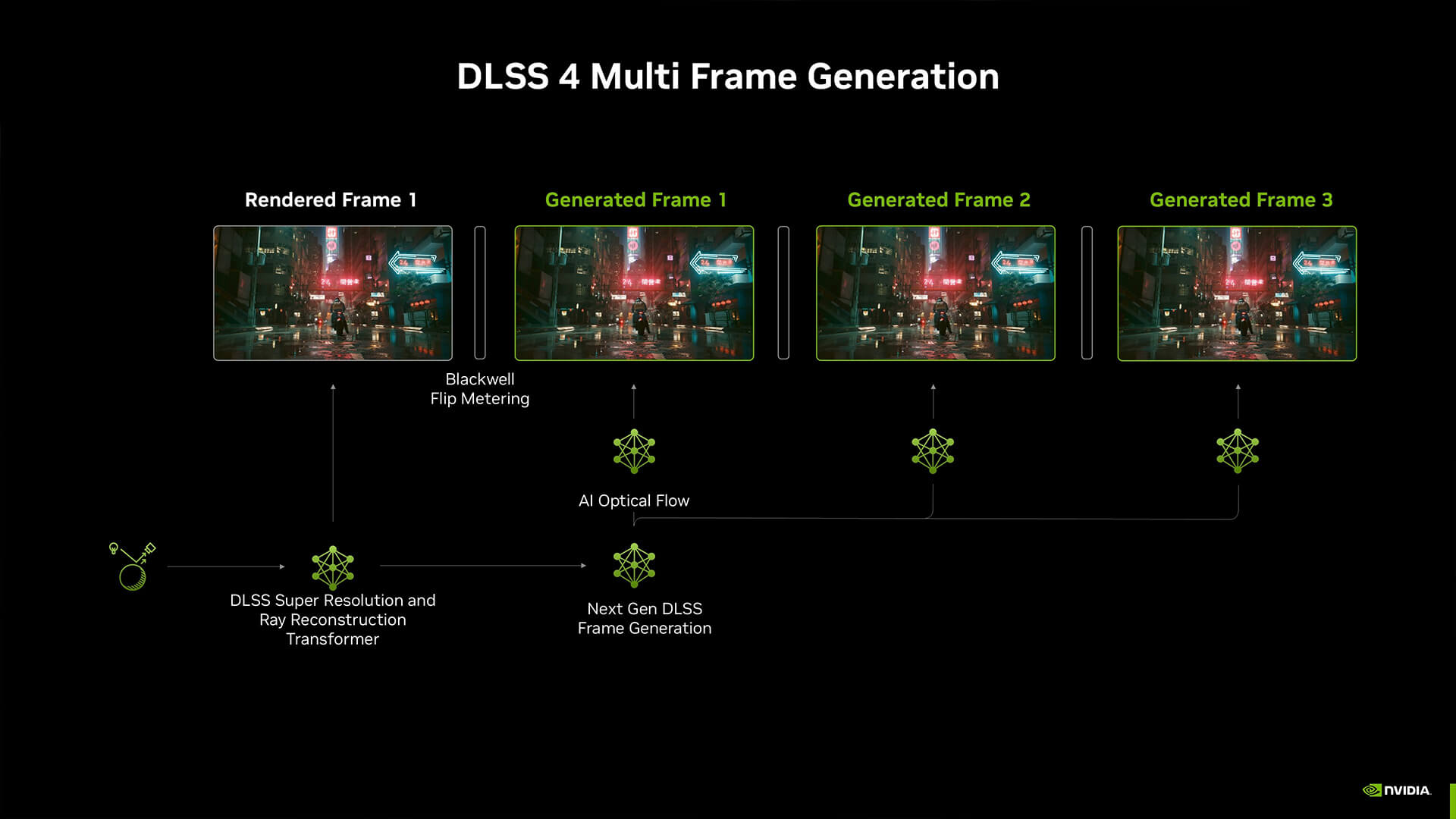
NVIDIA’s DLSS 4 represents a major architectural evolution from previous iterations of Deep Learning Super Sampling. It’s not merely an upscaler - it’s an AI-driven rendering system designed to infer, reconstruct, and even generate new frames.
Core Technical Enhancements in DLSS 4
Transformer Neural Networks
DLSS 4 replaces earlier convolutional networks with transformer-based AI models, improving temporal stability and edge reconstruction. These models analyse multiple frames simultaneously to predict pixel-level details with higher accuracy.
Multi-Frame Generation (MFG)
Exclusive to the RTX 50-series, MFG can interpolate up to three synthetic frames for every traditionally rendered frame. This dramatically increases perceived frame rates without heavily impacting the GPU’s main pipeline.
Ray Reconstruction Module
This subsystem replaces game-engine denoisers with AI-trained reconstruction, resulting in more accurate lighting, reflections, and soft shadows. It is particularly effective in Ray Tracing workloads, producing cleaner image output and less temporal noise. This is where DLSS 4 ray reconstruction explained truly shows its value, clarity, and realism without the usual frame-rate penalty.
Improved Inference Efficiency
New Tensor Cores within the Blackwell GPUs enhance AI throughput, while frame-pacing algorithms minimise latency. DLSS 4 also consumes less VRAM, improving consistency on mobile GPUs.
Performance Interaction Between DLSS 4 and Ray Tracing
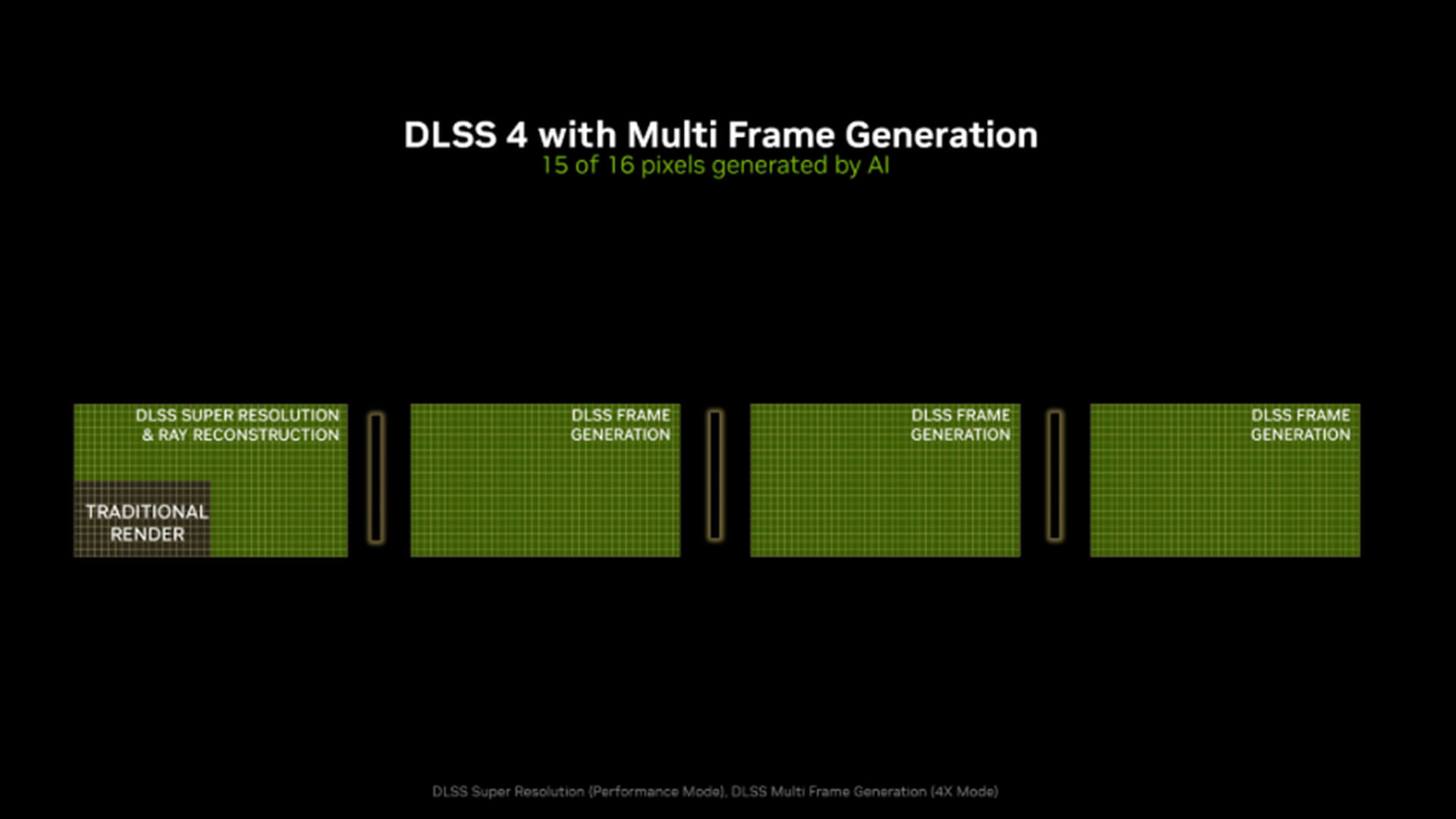
DLSS 4 and Ray Tracing form a highly interdependent relationship - one adds computational load, the other mitigates it.
When Ray Tracing is enabled, the GPU expends massive resources on light and geometry calculations. DLSS 4 counterbalances this by allowing the GPU to render internally at a lower resolution and reconstruct a higher-quality output through AI inference.
In practice, this means gamers can experience 4K-quality visuals rendered at 1440p workloads, preserving both image sharpness and performance. Benchmarks on RTX 5090 laptops demonstrate up to 80–100% frame-rate gains when DLSS 4 is enabled in Ray-traced titles, without perceptible degradation. That’s the hallmark of leading RTX 5090 DLSS 4 performance.
The result is an entirely new equilibrium: high frame rates, minimal aliasing, and realistic lighting - all operating in real time.
To experience the real benefits of DLSS 4 and Ray Tracing GPU performance, explore our roundup of the best high-end GPUs for 4K & Ray Tracing gaming, featuring models optimised for next-gen visuals.
Visual Accuracy and Temporal Stability Improvements

Previous generations of AI upscaling often suffered from temporal instability - issues like ghosting, flickering, or “boiling” artefacts. DLSS 4’s transformer model resolves many of these flaws through advanced temporal analysis.
In practical testing, scenes in Alan Wake 2 and Cyberpunk 2077 exhibited improved motion clarity and cleaner reflection gradients when using DLSS 4 with Ray Reconstruction.
Texture consistency across motion frames is another key gain: fine environmental details like foliage and particle effects maintain fidelity under camera movement, reducing motion artefacts and improving realism across DLSS 4 supported games.
Hardware Requirements: Blackwell Architecture Advantages
DLSS 4’s most advanced functions are optimised for NVIDIA’s Blackwell-based RTX 50-series GPUs, where both Tensor and RT Core upgrades deliver higher inference speed and lower latency.
Key Hardware Enhancements:
- 5th-Generation Tensor Cores supporting transformer inference
- Enhanced RT Cores for multi-bounce global illumination and faster BVH traversal
- Improved Scheduling for concurrent AI and graphics workloads
- NVIDIA Reflex integration for lower end-to-end latency during Multi-Frame Generation
Earlier RTX generations (30 and 40 series) will receive Ray Reconstruction support through driver updates, but the full Multi-Frame Generation pipeline remains exclusive to RTX 50-series hardware, making them the best GPUs for Ray Tracing and DLSS available today.
DLSS 4 vs DLSS 3.5: A Major Leap Forward
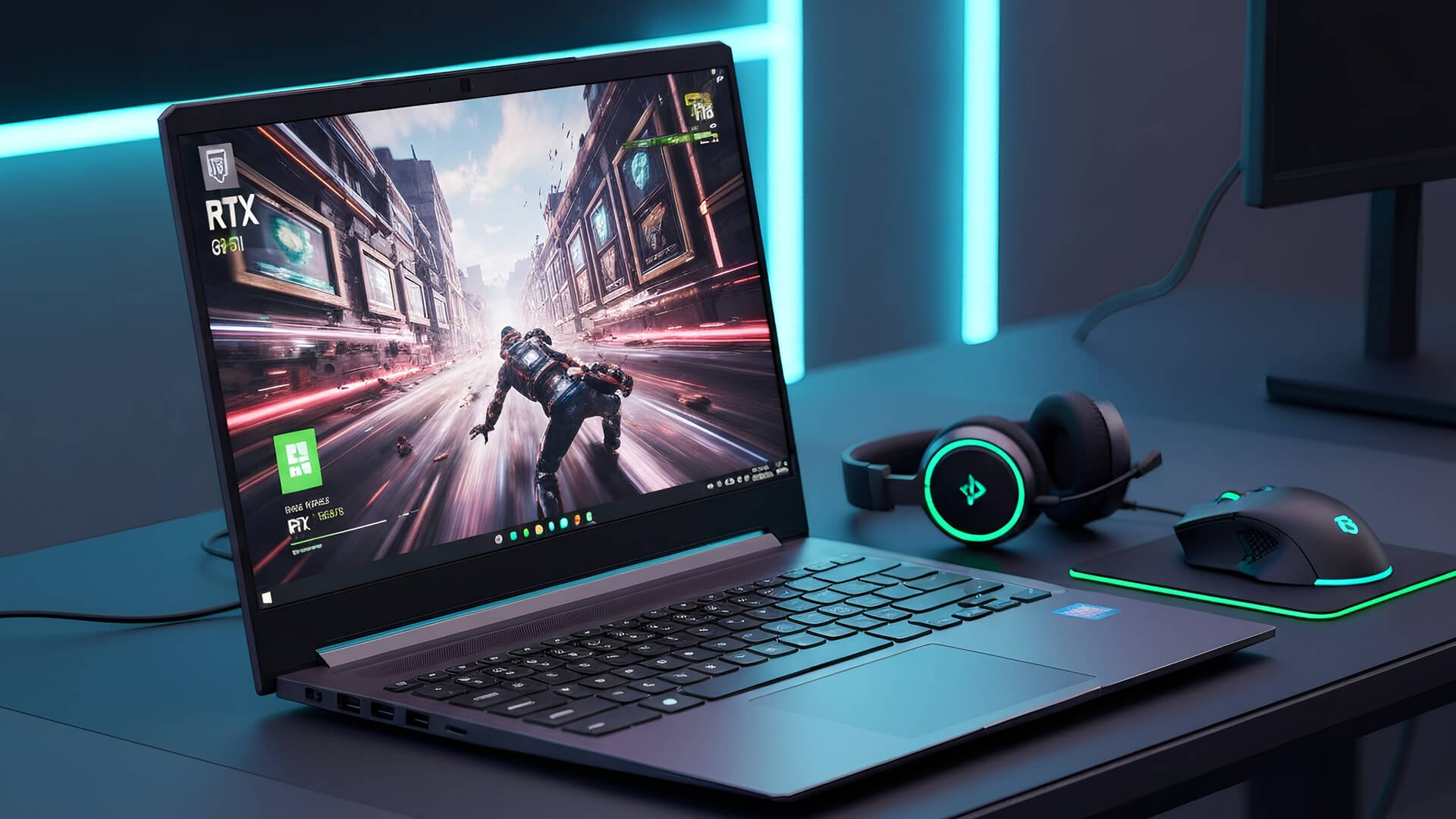
When comparing DLSS 4 vs DLSS 3.5, it’s clear this is a complete overhaul of how upscaling works.
- Transformer-based AI models improve motion stability and edge sharpness.
- Multi-Frame Generation allows DLSS 4 to create up to three AI frames for every real one, doubling perceived frame rates.
- Improved Ray Reconstruction delivers smoother lighting and shadow transitions.
- Better Efficiency means lower VRAM usage and improved frame pacing.
In benchmarks, RTX 5090 DLSS 4 performance showed boosts of up to 80 percent in demanding Ray-traced titles. That’s why the Nvidia RTX 5090 for DLSS 4 performance stands out among the top Nvidia GPUs with DLSS and Ray Tracing.
Impact of DLSS 4 on Laptop GPUs
In mobile form factors, DLSS 4 provides transformative efficiency. High-end gaming laptops now achieve desktop-class visuals without thermal throttling or excessive power draw.
At 1440p / 240 Hz Displays
DLSS 4 allows RTX 5070 and above to sustain triple-digit frame rates with Ray Tracing active, leveraging AI frame generation to fill refresh intervals smoothly.
At 4K / 120 Hz Displays
Premium laptops featuring RTX 5080 or 5090 GPUs can now enable full Ray Tracing at native 4K resolutions with playable frame rates—a milestone once reserved for desktops. These results match recent Nvidia RTX 5080 Ray Tracing benchmarks, which show how the new architecture balances thermal efficiency with performance.
This AI-driven efficiency allows high-end laptops to deliver superior balance between power, thermals, and sustained performance for gaming and creative workloads.
DLSS 4 AI acceleration benefits creative workflows too. Check out the top GPUs for 3D rendering, video editing & game streaming to see which models deliver professional-grade performance across every use case.
Practical Considerations for Real-World Performance
Even with DLSS 4, Ray Tracing still introduces considerable GPU load. For consistent frame pacing and thermal control, hardware selection and cooling design remain critical.
When evaluating systems for high-end use, three key performance zones emerge:
|
Use Case |
Target Resolution / Refresh |
Recommended GPU |
DLSS 4 Benefit |
|
Competitive Gaming |
1440p / 240 Hz |
RTX 5070+ |
Frame Generation delivers smoother motion at minimal latency |
|
AAA Gaming |
4K / 120 Hz |
RTX 5080–5090 |
Enables full Ray Tracing with stable frame rates |
|
Content Creation |
Variable |
RTX 4070+ |
Improves real-time rendering and preview fidelity |
AI-Driven Rendering: A Shift in GPU Philosophy
DLSS 4 marks the shift toward AI-assisted rendering. Historically, performance gains relied on transistor density and higher clock speeds; now they depend on neural inference and prediction accuracy. DLSS 4 proves that smarter rendering can outperform sheer brute force.
AMD’s FSR and Intel’s XeSS pursue similar goals, but DLSS 4’s transformer-based architecture and Multi-Frame Generation set a new benchmark for visual quality and temporal stability.
AI-Enhanced Ray Tracing GPUs: The Future of Visual Computing
DLSS 4 isn’t only about gaming; it defines the next generation of visual processing. Instead of relying solely on hardware strength, GPUs now use AI to reconstruct and predict visuals with astonishing precision.
This transition to AI-enhanced Ray Tracing GPUs is what makes DLSS 4 a milestone. Competing upscalers follow, but DLSS 4 transformer-based intelligence leads the field in detail retention and motion accuracy.
Thermal and System Design: Powering the Next Generation

Even with DLSS 4 efficiency, powerful GPUs require capable cooling. Premium systems using RTX 5080 and RTX 5090 feature advanced vapour-chamber cooling, AI-controlled fan systems, and higher TGPs to handle demanding Ray-traced workloads.
If you’re building or buying a new setup, consider a DLSS-ready RTX gaming PC engineered for these technologies. Such systems maintain consistent performance and temperature balance, unlocking the full potential of DLSS 4 and Ray Tracing GPU performance.

Conclusion: Smarter Rendering, Better Gaming
The synergy between DLSS 4 and Ray Tracing defines the new standard for high-end GPU performance. Ray Tracing provides cinematic realism; DLSS 4 ensures that every frame remains smooth, sharp, and fluid.
With RTX 5090 DLSS 4 performance setting unprecedented benchmarks and RTX 5080 Ray Tracing capabilities bringing next-gen lighting to portable devices, gamers and professionals alike are entering an era where visuals are intelligent as well as beautiful.
Unsure which GPU best fits your setup? Our graphics card buying guide simplifies specs, performance tiers, and key DLSS support features to help you choose with confidence.

What Gamers Want to Know...
How does DLSS 4 compare to Ray Tracing?
Ray Tracing improves realism by simulating light and reflections, while DLSS 4 boosts performance using AI upscaling and frame generation. Ray Tracing enhances visuals; DLSS 4 ensures those visuals run smoothly. Together, they deliver realistic and high-speed gameplay.
Why is DLSS so important for GPU performance?
DLSS 4 uses AI to render games at lower resolutions and upscale them to higher quality, reducing GPU strain. This means higher frame rates, smoother gameplay, and less performance loss when features like Ray Tracing are enabled.
Can DLSS and Ray Tracing work together?
Yes. DLSS 4 and Ray Tracing complement each other. Ray Tracing delivers lifelike lighting, and DLSS maintains high performance by using AI to fill in detail and generate extra frames.
What GPU does DLSS 4 work on?
DLSS 4 is supported on NVIDIA RTX 50-series GPUs like the RTX 5080 and RTX 5090, with partial Ray Reconstruction support available for RTX 30- and 40-series cards via updates.
| Read More: |
| Liquid-Cooled vs Air-Cooled GPUs – Which Is Better for High-End Builds? |
| Top GPUs for 3D Rendering, Video Editing & Game Streaming |
| Best High-End GPUs for 4K & Ray Tracing Gaming |
Related Articles

January 09, 2025
The future of gaming and computing is here! The NVIDIA RTX 50 Series GPUs unleash groundbreaking technology for jaw-dropping visuals and unprecedented performance, pushing the boundaries of what’s possible! Be prepared to be astonished!
Jensen Huang, CEO of NVIDIA, just revealed the highly anticipated RTX 50 Series graphics cards at CES 2025, setting the gaming world abuzz. Codenamed “Blackwell”, the new 50 Series GPUs bring huge improvements to AI acceleration and overall gaming performance. The announced RTX 50-Series features four new graphics cards: the RTX 5090 and the RTX 5080 (set to release on January 30, 2025), and the RTX 5070 Ti and the RTX 5070, stated for a February 2025 release. NVIDIA may also launch the GeForce RTX 5060 Ti and RTX 5060 as a part of the full lineup later in March. According to Huang, the RTX 50 Series GPUs are the ‘most advanced consumer GPUs for gamers, creators, and developers’, offering “breakthroughs in AI-driven rendering” and “game-changing performance",

February 20, 2025
Looking for portable graphics cards? Graphics cards are an essential component for gamers, creative professionals, and tech enthusiasts. As the market evolves, new models are released with cutting-edge technology, while older ones become more affordable. Whether you are looking for the latest high-performance GPUs or seeking budget-friendly options, 2025 presents some fantastic deals on graphics cards.
In this blog, we will explore the best deals on gaming graphics cards, including RTX and AMD GPUs, and help you find the most value-packed choices from top brands. Whether you are searching for discounts on AMD graphics cards or affordable Nvidia graphics cards, we have you covered.
Why 2025 Is a Great Year for Buying a Graphics Card
The GPU market in 2025 has stabilised significantly compared to previous years, making it an ideal time to grab some of the best deals. Key factors influencing the affordability of graphics cards this year include:
- Increased Supply: Manufacturers have ramped

April 14, 2025
People who play games, stream live or create content must select the right GPU because it determines how seamlessly their system works. The quality of your streaming, games or video editing depends strongly on a dependable GPU system. In this blog, we will analyse the best GPUs for 1080p streaming, editing and gaming. We will highlight their standout features that will guide your purchasing decision.
The Best GPUs for 1080p Streaming, Editing, Gaming & Other Functions
Here are some best-in-their-class graphics cards for streaming and other activities.
GIGABYTE GeForce RTX 3060: Fantastic price-to-performance ratio
Users consistently rate the GIGABYTE GeForce RTX 3060 12GB as one of the most superior GPUs for streaming and other purposes. The GPU provides outstanding performance specifically for gamers and streamers while retaining affordability. Content creators and gamers will appreciate this RTX 3060 GPU because it uses Nvidia’s Ampere architecture to deliver high-quality ray tracing

May 21, 2025
PC gaming doesn’t have to cost you an arm and a leg, especially if most of your time is spent exploring the vibrant world of Steam. From high-octane shooters like Apex Legends to the beautifully chaotic world of Palworld, millions of players log in daily without relying on a flagship GPU. The truth is, not everyone wants or needs a thousand-pound graphics card. What most gamers appreciate is a smooth, enjoyable experience at 1080p, and thankfully, plenty of best budget graphics cards can make that happen at a fraction of the cost.
The challenge? There are loads of options out there. New releases, refreshed models, refurbished deals and much more. Add confusing benchmarks, marketing jargon, and ever-evolving game requirements, and finding the right budget GPU for your Steam library can feel like a guessing game.
To help you out in your decision-making, we’ve pulled together a list of the best budget GPUS that strike the right balance between performance and price. Each one has been chosen

June 25, 2025
When it comes to building a PC, choosing the right GPU is crucial. Whether you are a casual gamer, a competitive enthusiast, or a creative professional working with 4K video and 3D rendering, the graphics card you choose can directly impact your PC’s performance, visual fidelity, and future-proofing potential.
With the launch of next-gen GPUs, such as NVIDIA's RTX 5000 series and AMD’s RDNA 4 lineup, the market is flooded with options that cater to every use case and budget. But how do you know which GPU is right for you? Should you invest in the most powerful graphics card available, or can a budget option handle your daily needs? And how does resolution, 1080p, 1440p, or 4K, influence your choice?
In this comprehensive guide, we will answer all these questions. From understanding performance tiers and VRAM requirements to matching your GPU with your monitor and CPU, we will break down everything you need to make an informed decision. We will also highlight the best GPUs in 2025 for every

August 26, 2025
Choosing a gaming laptop today is all about understanding the gaming laptop key features that move the needle foryourgames and workflow. In 2025, the big shifts are real: next‑gen GPUs with AI frame generation, smarter CPUs with onboard NPUs, faster storage that feeds data straight to the GPU, premium displays (OLED/Mini‑LED) at esports‑grade refresh rates, and cooling systems that can keep all of it performing sustainably.
However, what does all of that actually mean when you just want smooth gameplay and a machine that lasts? Below, we have you covered with a clear, up‑to‑date walkthrough of what to look for in a gaming laptop with the evidence to back it. Whether you’re looking at entry-level models around £900, mid-range workhorses at £1,500, or premium powerhouses above £2,000, this guide focuses on the essential gaming laptop key features.
If you’d like a broader perspective from budgeting to comparisons, you can check out our full gaming laptop buying guide.
GPU: the first decision
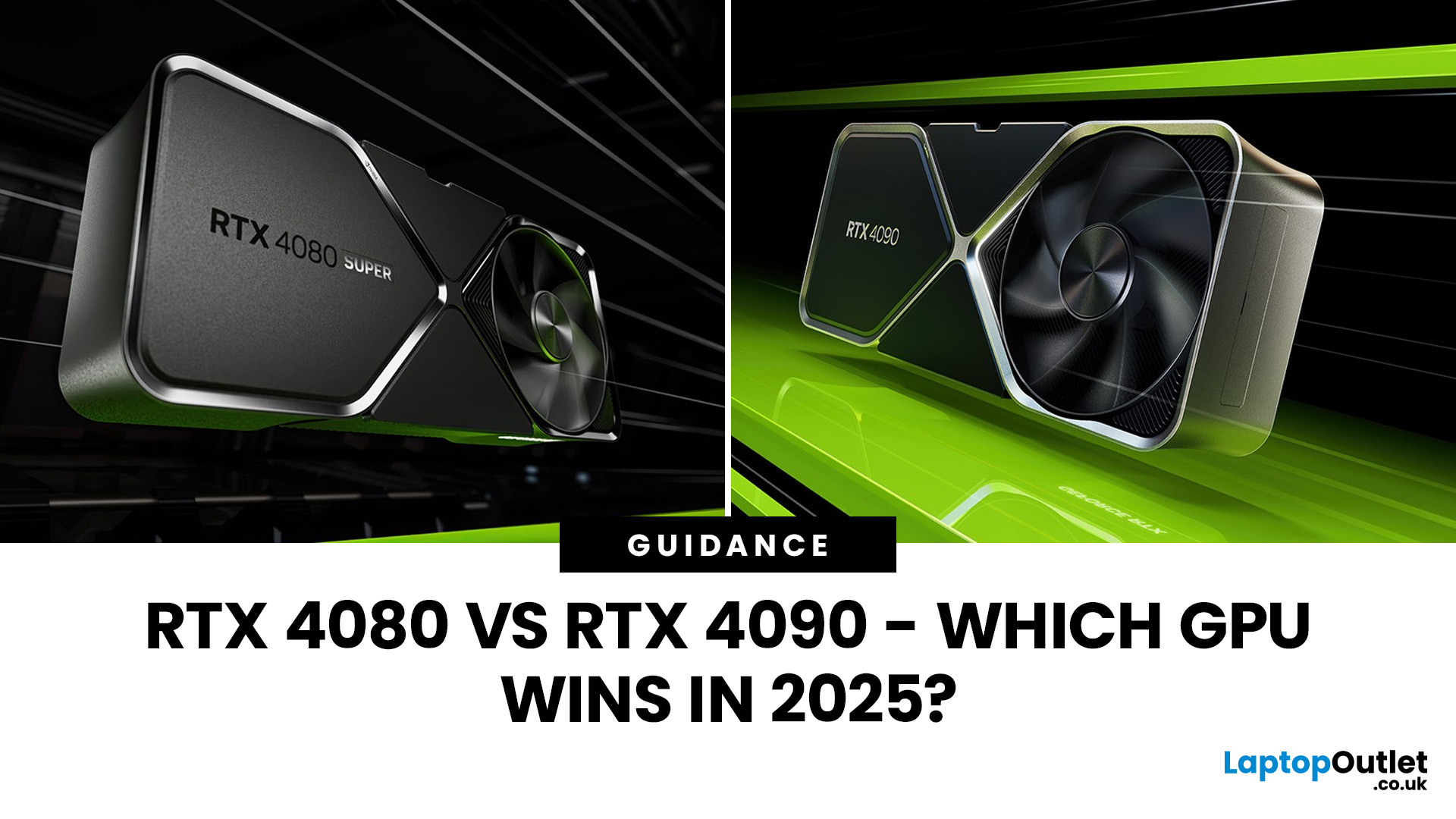
October 20, 2025
If you're weighing between the RTX 4080 vs RTX 4090, you’re right in the territory of flagship hardware, where even small trade-offs matter. In this guide, we’ll break down everything: specs, benchmarks, ray tracing, power consumption, and real-world use cases, so you can decide which GPU is worth your money.
Nvidia Ada Lovelace GPU Comparison: Architecture & Specs
Before we dig into benchmarks and performance, let’s compare the foundations.
-
Both the RTX 4080 and RTX 4090 are based on Nvidia’s Ada Lovelace architecture, bringing improvements in ray tracing cores, tensor cores, and DLSS 3 support.
-
The RTX 4090 carries more CUDA cores, more memory bandwidth, and a wider memory bus, giving it a significant hardware advantage in many scenarios.
-
That said, clock speeds between the two cards aren’t wildly different; much of the 4090’s advantage comes from scale (more cores, wider bus, more headroom).
Specs Breakdown: RTX 4080 vs 4090
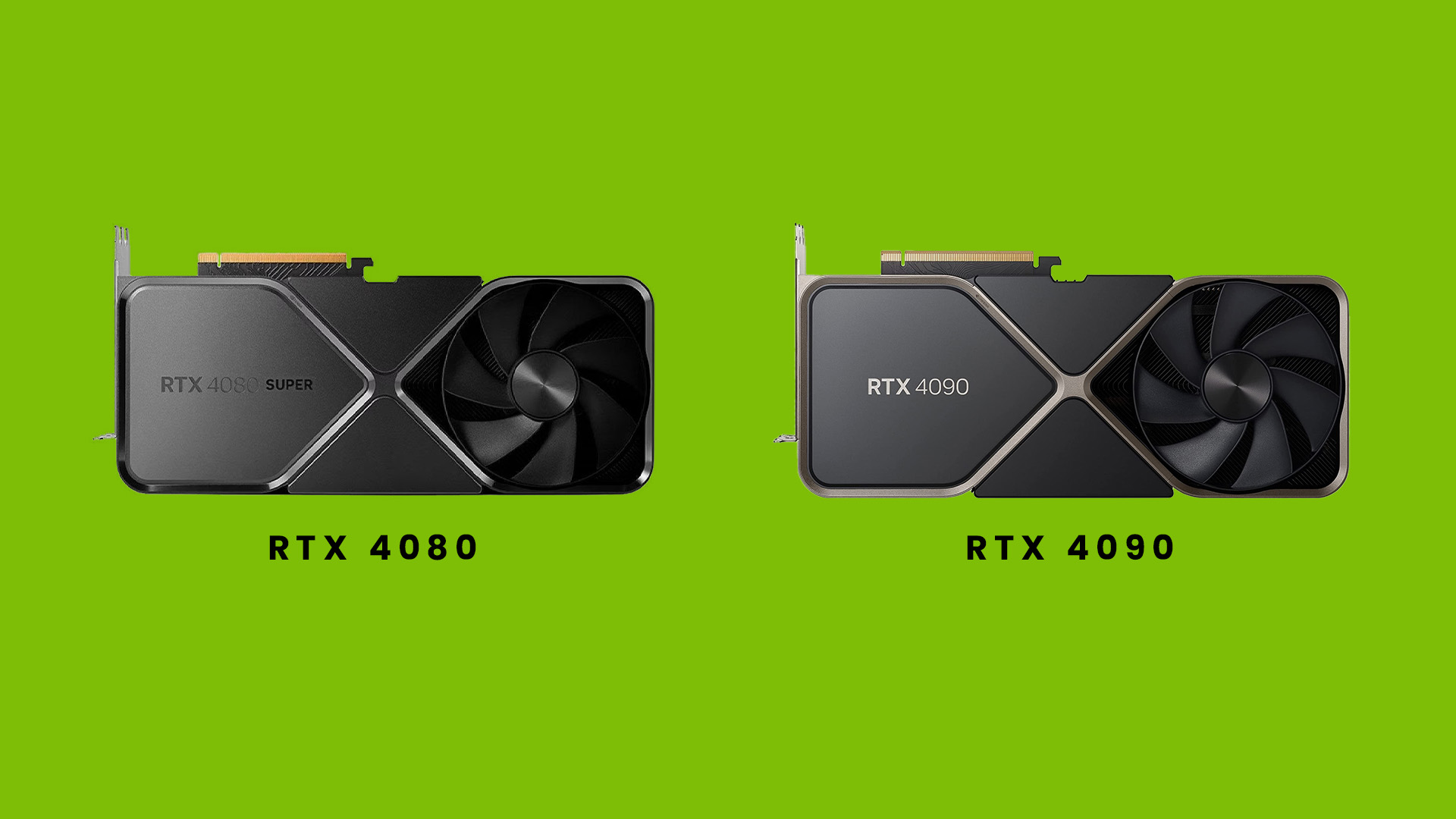
Here’s a simplified comparison of key specs:
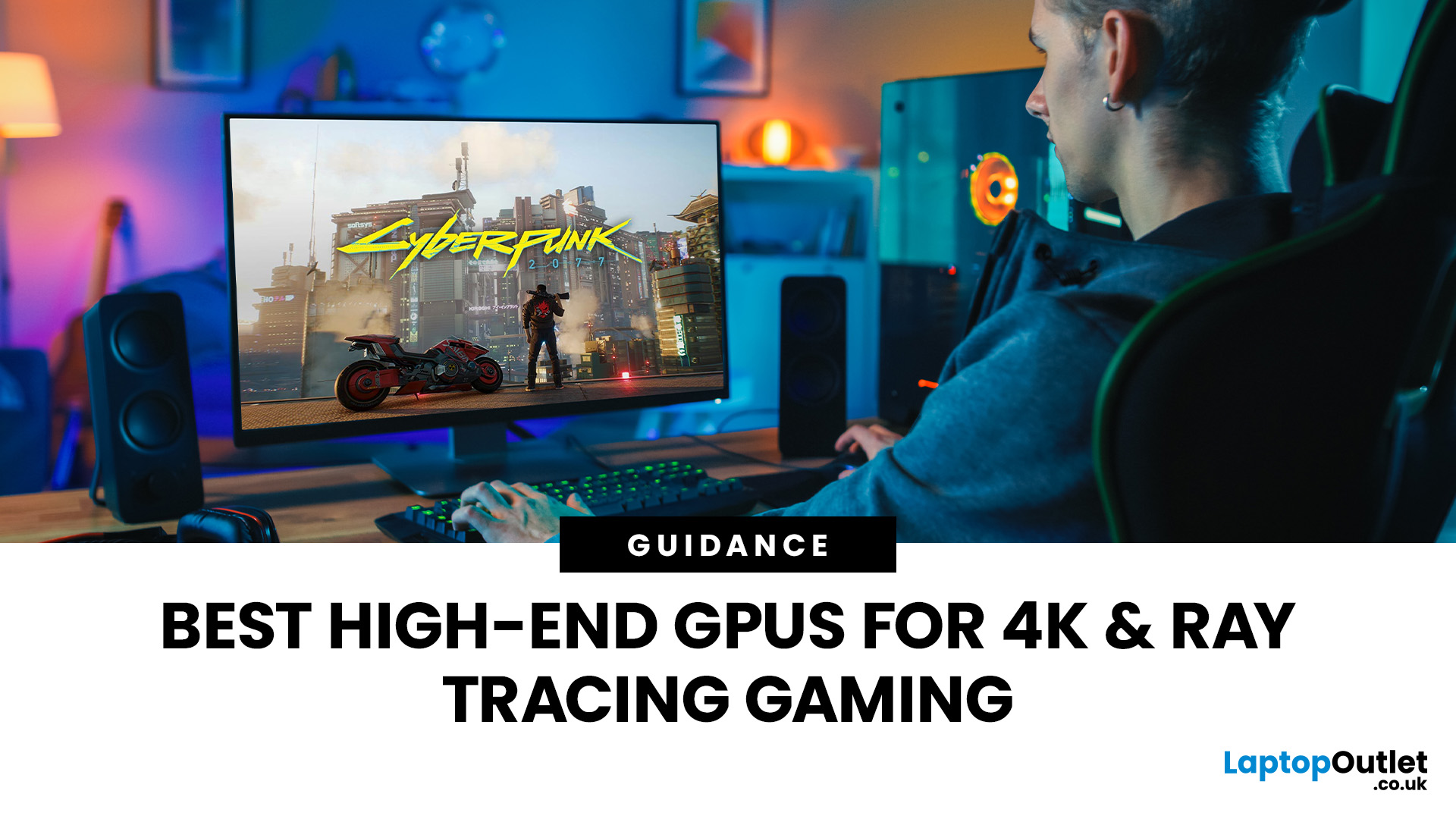
October 20, 2025
When it comes to 4K gaming with ray tracing switched on, the graphics card becomes the beating heart of your system. It’s not enough to pick a GPU purely on its tier or “nameplate” you need to consider architectural strengths, power headroom, cooling, driver support, and how well the card pairs with the rest of the system.
With NVIDIA’s Blackwell RTX 50-series and AMD’s RDNA 4-based RX 9000 line-up, 2025 has finally made ultra-detailed, ray-traced gaming a mainstream reality. These are truly the best high-end GPUs for 4K gaming, capable of handling demanding titles at ultra settings with lifelike detail and AI-assisted performance boosts.
In this blog, we’ll walk through what makes a GPU great for 4K + ray tracing, the leading options in 2025, and how they compare in real-world gaming.
The GPU Market in 2025: Where Things Stand
This year, both NVIDIA and AMD have delivered complete generations of high-end gaming GPUs:
-
NVIDIA Blackwell (RTX 50-series) refined efficiency, introduced

October 23, 2025
Do you think your GPU needs an immediate upgrade but confused which one is good?
Whether you’re a 3D artist, a content creator, or a streaming professional, choosing the right GPU can make or break your workflow. In 2025, graphics cards have evolved beyond gaming, they’re now AI-accelerated powerhouses that handle everything from 4K video editing to real-time ray tracing and live encoding. Let’s discuss the best GPUs for 3D rendering, video editing, and game streaming, comparing the latest NVIDIA RTX 50-series and AMD Radeon RX 9000-series cards. In addition, learn which models perform best in software like DaVinci Resolve, Adobe Premiere Pro, and OBS, helping you choose the perfect GPU for your professional or creative setup.
What to Look for in a GPU for Creative Work

Before choosing a GPU, it’s important to understand the key specifications that make a real difference in 3D rendering, video editing, and streaming performance. In 2025, the newest GPU architectures, NVIDIA Blackwell

October 27, 2025
Modern GPUs are more powerful than ever, and with that power comes heat, a lot of it. Whether you’re gaming in 4K, pushing frame rates in competitive titles, or overclocking for maximum performance, cooling plays a crucial role in how well your graphics card performs and lasts. The debate of Liquid-Cooled vs Air-Cooled GPUs has never been more relevant, especially for high-end builds running the latest NVIDIA and AMD cards.
This guide breaks down how each cooling method works, their pros and cons, and which one offers the best balance of performance, noise, and reliability. If you’re planning a premium setup in 2025, understanding your GPU’s cooling system is just as important as choosing the GPU itself.
Why GPU Cooling Matters More Than Ever
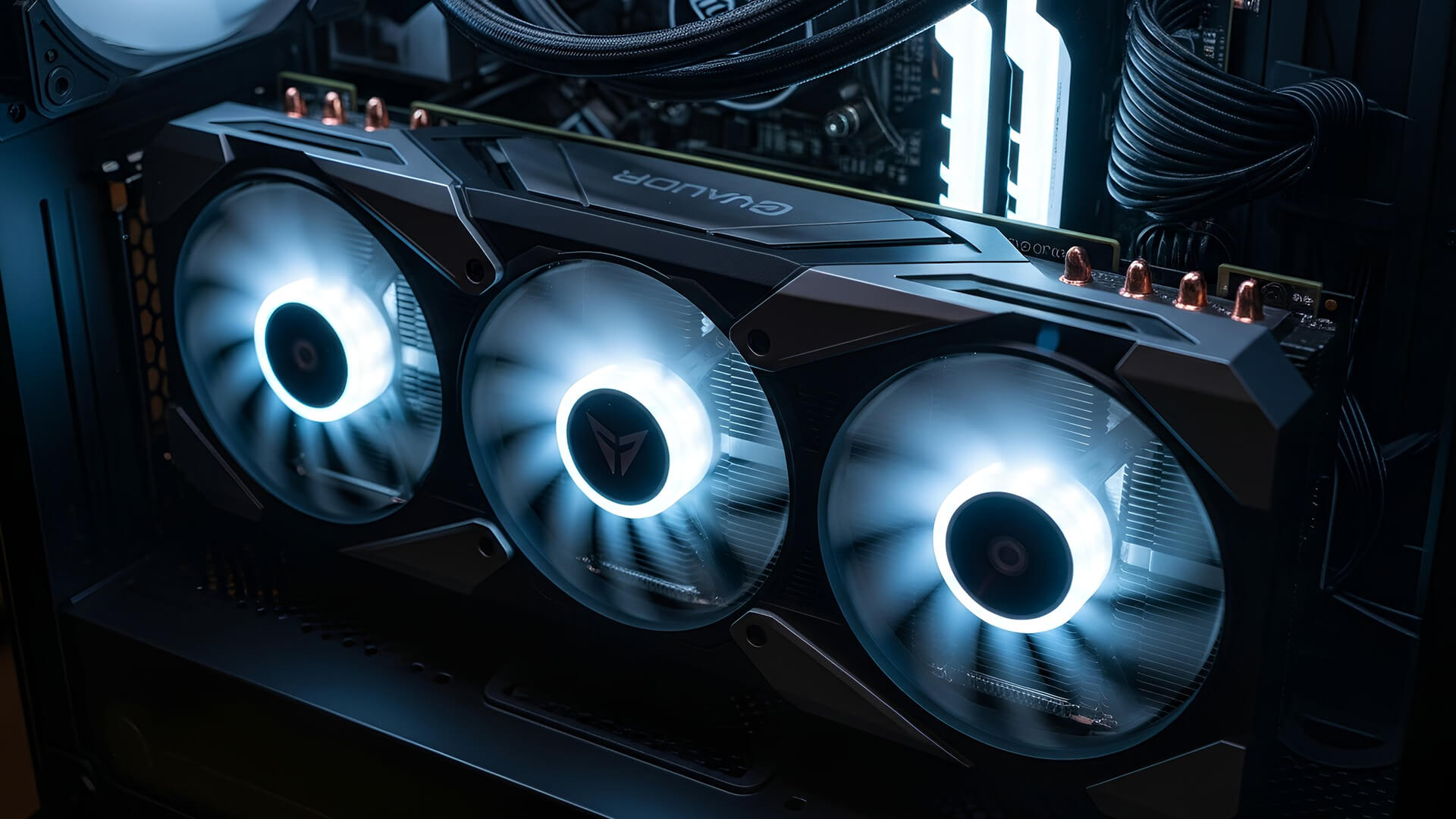
Modern GPUs have evolved into high-performance powerhouses, often rivaling CPUs in complexity and power to draw. Cards like the RTX 5090 or RX 7900 XTX can consume 400W or more, and that energy translates directly into heat. If that heat isn’t managed
